How did you get into making art?
It’s my way of being in the world…I was never not into making art. I spent a while in my teens and into my twenties trying not to be an artist. But it’s the truest version of my reality.
Emily Kraus on finding freedom within confinement, responding to isolation, & working towards a major upcoming exhibition.
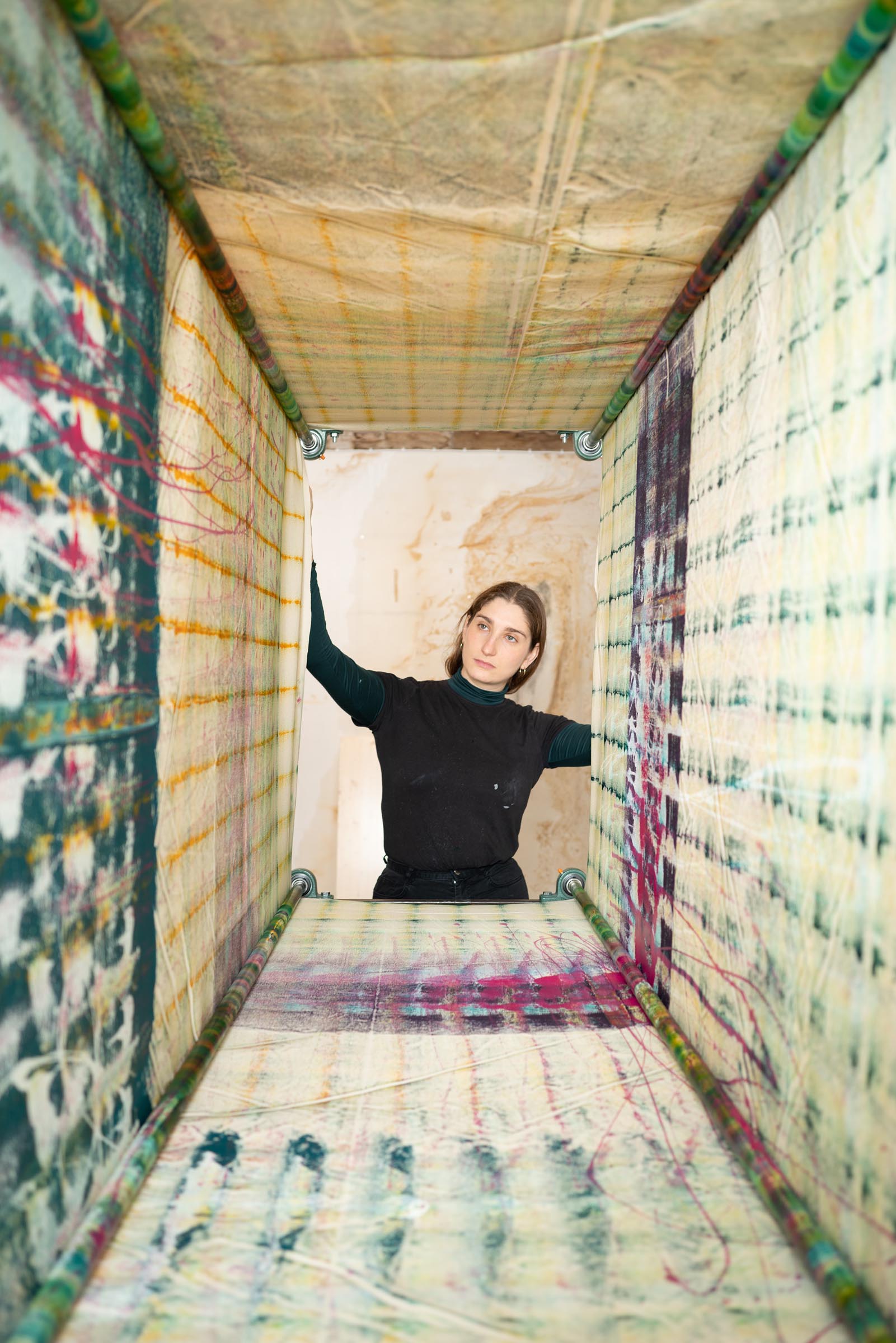
How did you get into making art?
It’s my way of being in the world…I was never not into making art. I spent a while in my teens and into my twenties trying not to be an artist. But it’s the truest version of my reality.
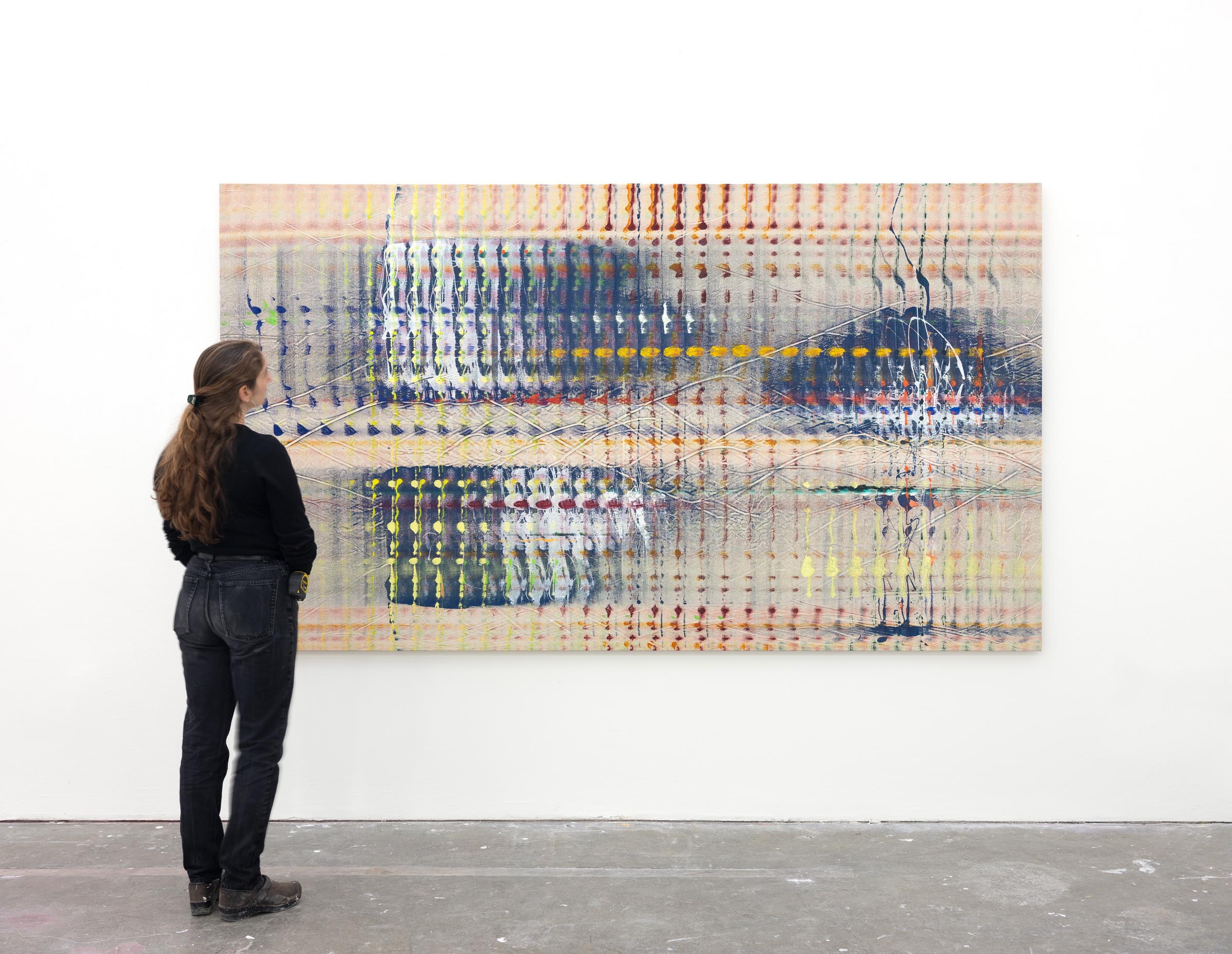
What are you currently working on?
I’m continuing to work on the Stochastic Series. I am working towards my first solo show (at The Sunday Painter gallery in London) which means that I am thinking about how to create and curate work into a body that lives together and in relation one another, ultimately creating an effect on the viewer. I understand everything I experience through my body’s physical relationship to space. I employ this in the making process and also in how I consider the work will be viewed. One of the rooms of the gallery where I will present my show has 18-foot ceilings, so I am using the height to create an environment that envelops the viewer inside the paintings, just like I am when I create them. To create this environment in which space effects the body, I have changed the dimensions of the mechanism I use to make the paintings. This provides new logistical and physical challenges.
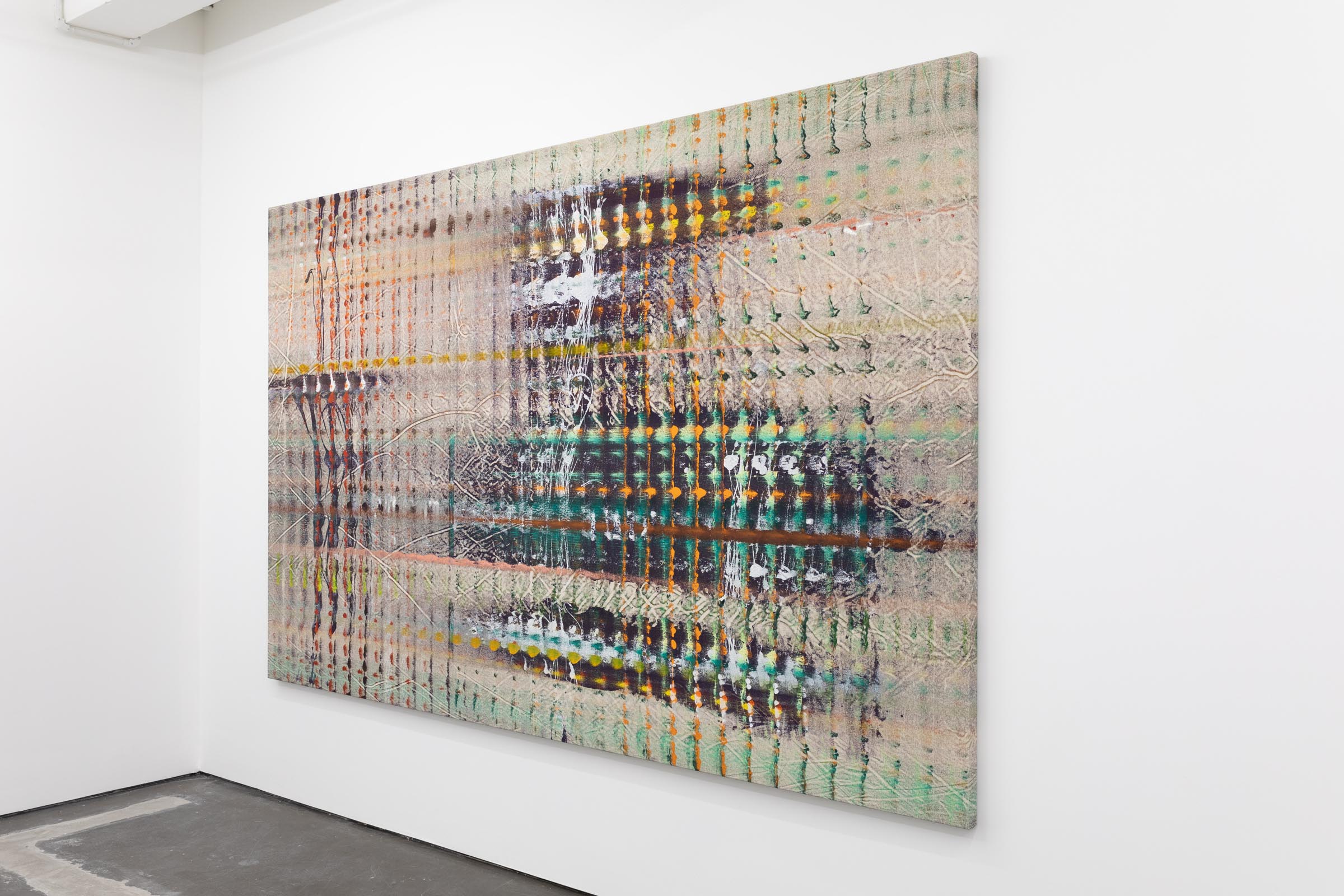
My painting process is one of spontaneity, agility, reaction, and freshness.
Emily Kraus
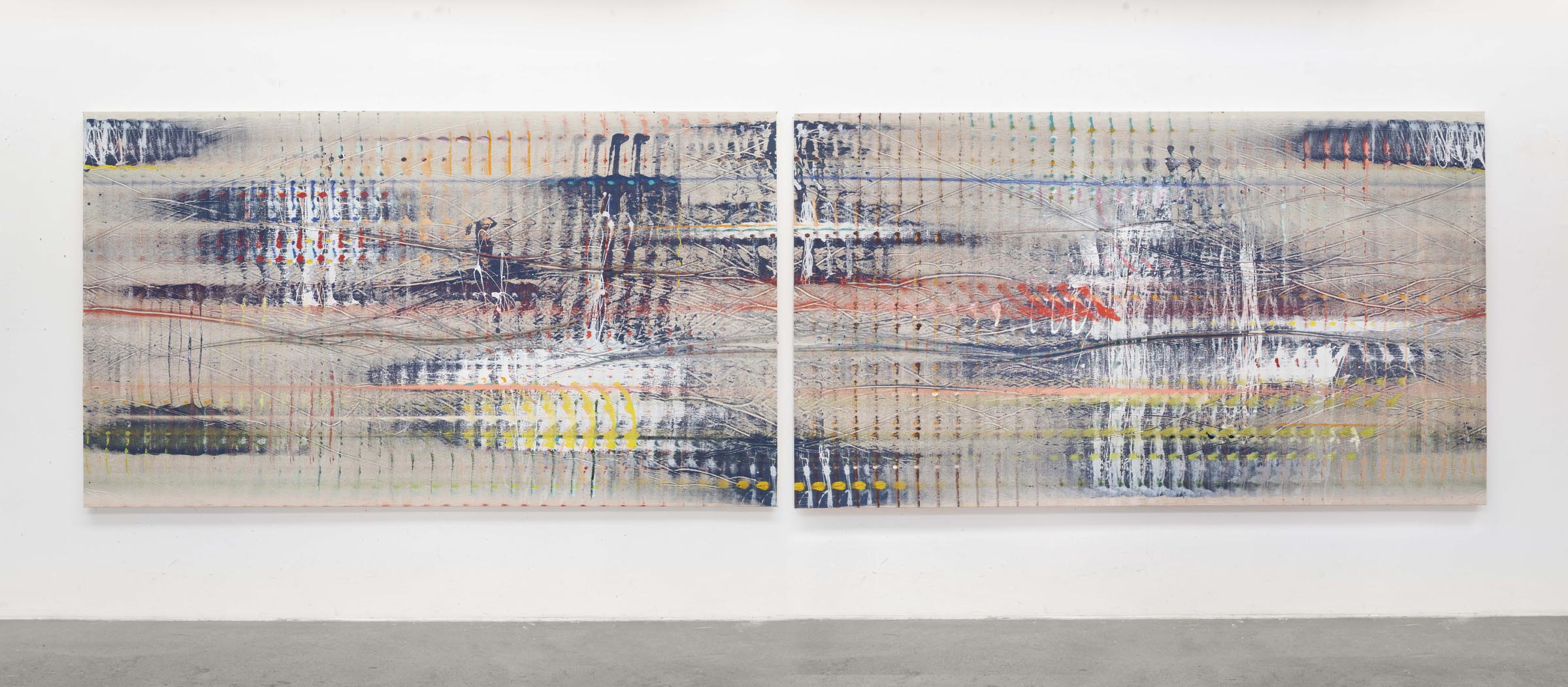
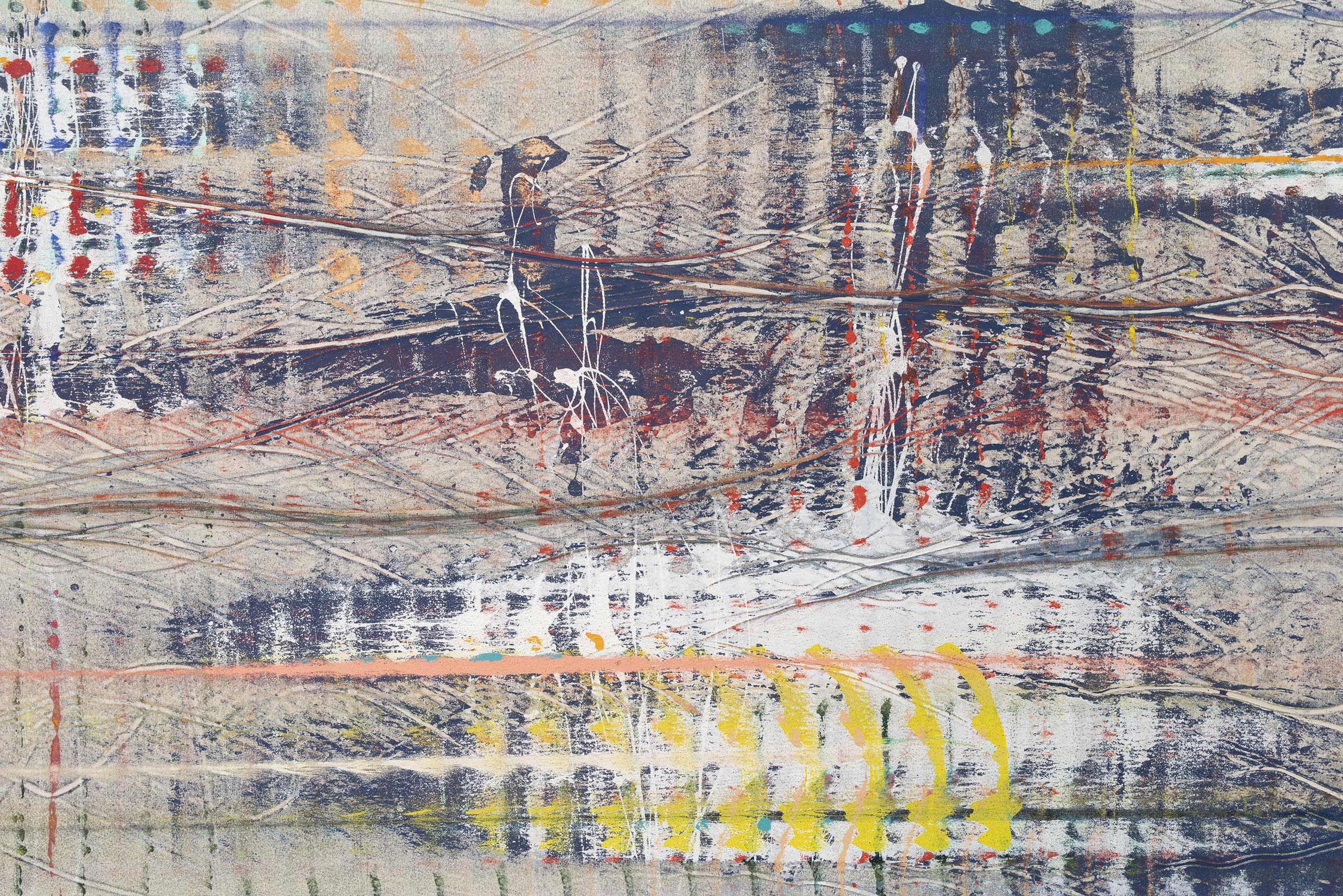
What inspired you to get started on this body of work?
This body of work arose in response to the conditions of my studio at the Royal College of Art. I started my Painting MA in the fall of 2020 and for the first year we did not have studios due to COVID. Being confined at home and tasked with writing a dissertation in the first year of the masters, I became obsessed with space, confinement, and surfaces. I read and theorized and wrote a lot about surfaces/boundaries of objects/places/bodies and also how to move through boundaries or relate differently to them. [I thought about the surfaces of objects/places/beings and the relationships between them.] When I returned for my second year at RCA, I was assigned a studio that was an 8×8 foot cube with no windows and bad lighting. (This was due to the college oversubscribing the program, an endemic problem at the RCA, and taking on a building not meant to be studios in order to accommodate the larger numbers.) It was like a cell or cubical. Previous to this, I had worked at a large scale, stretching the limits of my body with large gestures and playing with orientations of space (wall/ceiling/floor, etc.). In this studio, I didn’t have room to move my body around or stand back from the paintings to see them in their entirety. Once again, I found myself in a contained space. In an attempt to use the space more efficiently and work on multiple surfaces at once, I wrapped the 8x8ft cube in canvas, stitching it into a loop and holding it in place in each corner with shower rods. This construction allowed me to change the painting more easily by rotating the canvas. As I worked with this system, wet paint began to travel unexpectedly around the canvas, distributed by the very poles that were simply meant to hold it in place. This error ultimately grew into the Stochastic paintings.
I have spent a lot of time in isolation and confined spaces both throughout lockdown and through a longstanding meditation practice. Sometimes, the confined space is one’s own mind. But equally, when physically confined, the mind can be free. By revolving the circumstances, I found freedom within confinement. The endlessly changing and variable marks creating worlds built from intuition and which inspire/fuel my imagination.
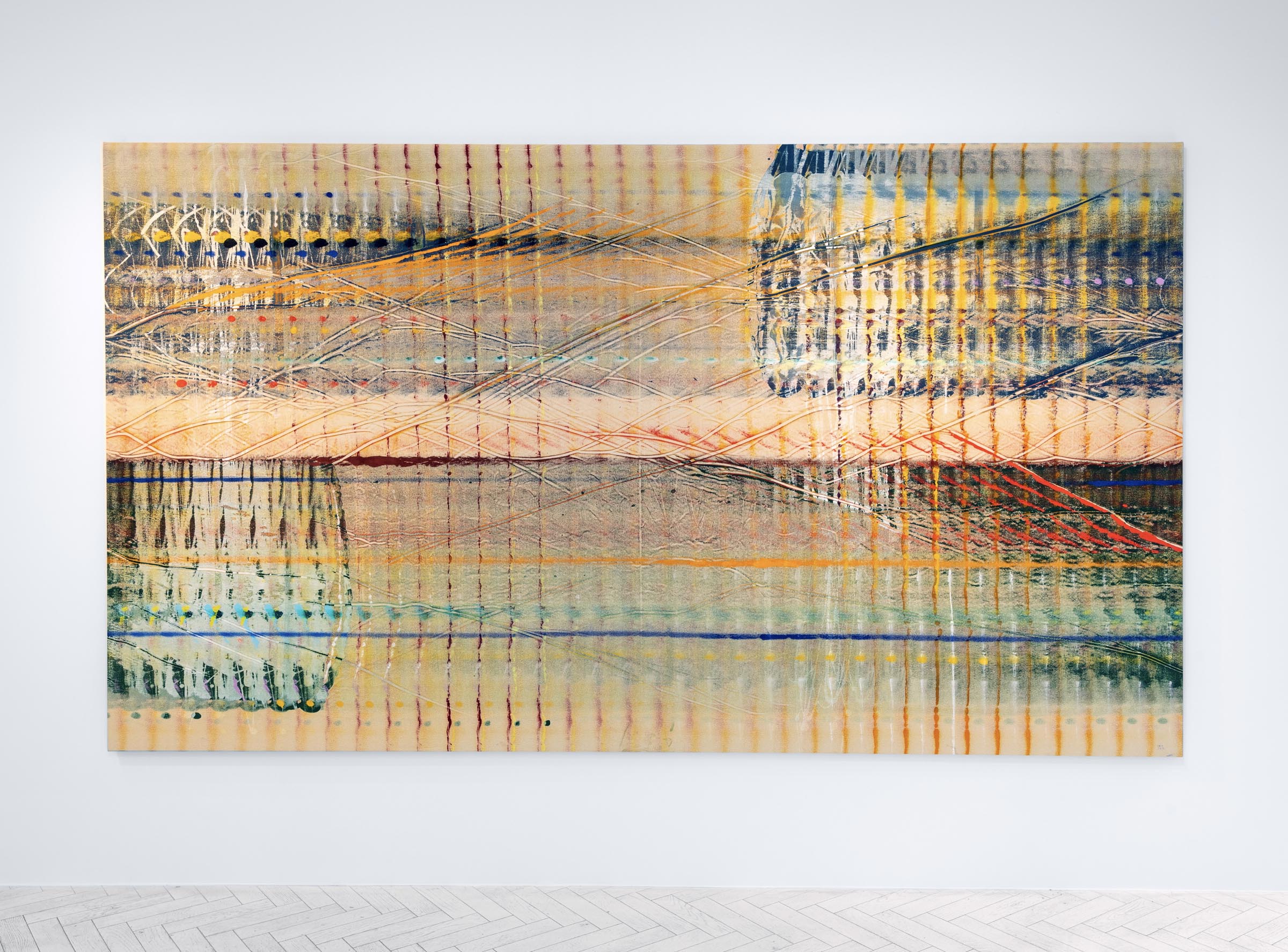
Do you work on distinct projects or do you take a broader approach to your practice?
The Stochastics have entirely taken over my practice. At first this was because they literally took over all the space I had, and then the work became more interesting and surprising than anything else I was doing. As I continue to work with this process, distinct projects arise within what started as one project. It is an unfolding world.
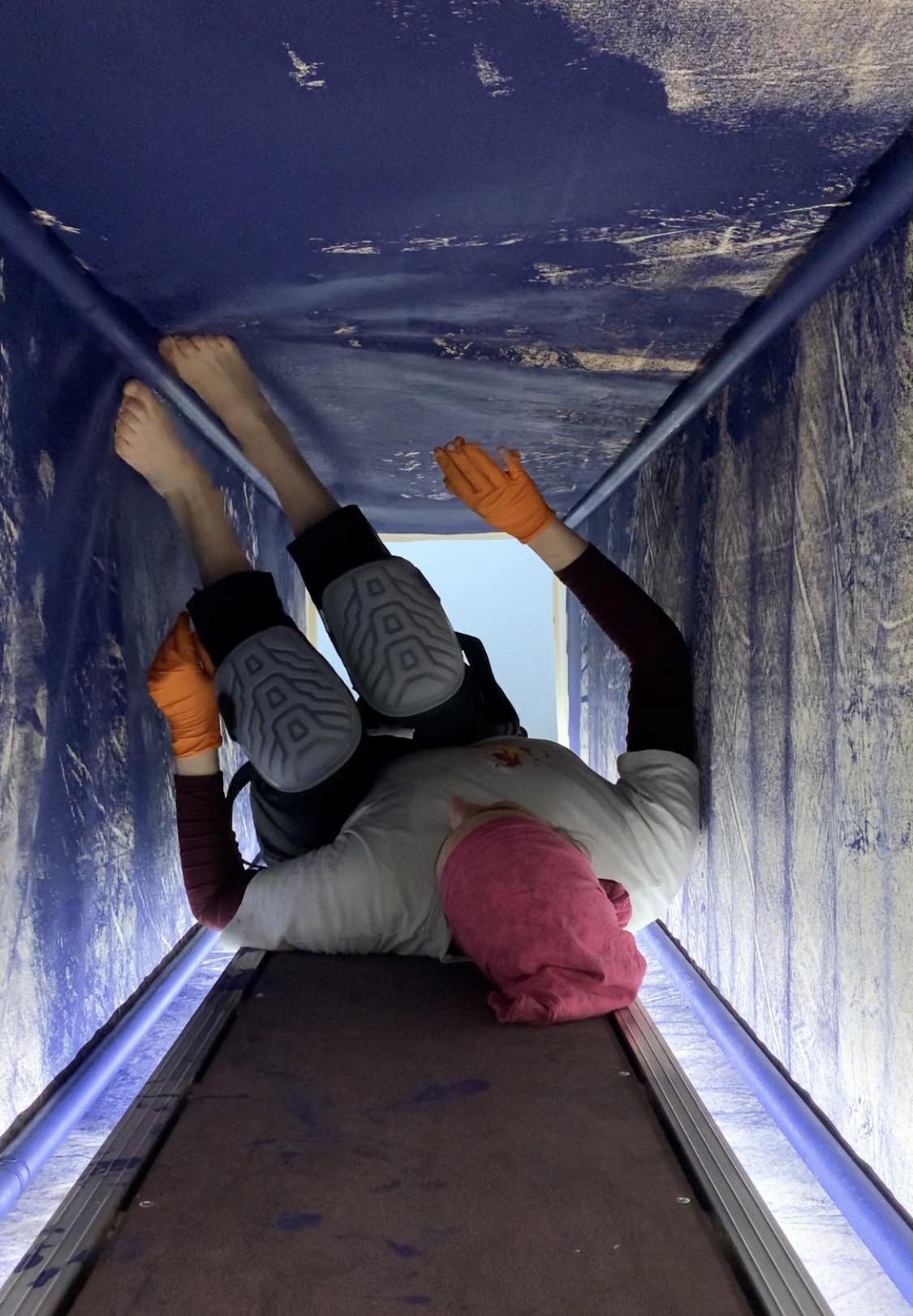
What’s a typical day like in your studio?
I wake up around 7:30, drink coffee, practice yoga, and begin in the studio around 10. My studio is in the same building as where I live. I don’t separate studio from life much…this is what makes most sense to me. Movement and understanding of body mechanics are integral to my practice, so I consider yoga to be part of my studio day. Each night I assess what I’ve done that day and make a to-do list for the following one; this takes away the groggy hour in the morning when I’d usually futz about trying to remember who I am, let alone what I was supposed to do that day.
I start the day by looking at my paintings. My painting process is one of spontaneity, agility, reaction, and freshness. When I paint, I don’t have set goals. It’s an open block of time when I look and think and play mental games with potential colors or shapes…everything happens in the moment. I imagine if you were to watch me work, there would be spans of 10 or 20 minutes sometimes where I am just staring into a painting. With each new color/mark added, I reassess what is in front of me with fresh eyes to consider the next movement. The most hours I could actively paint in a day would probably be 4. This is the limitation of the process, which necessitates drying time between layers of oil paint. I paint by distributing on the rollers, so it’s not possible to work on the left top corner, say, without working on the whole painting. If I add too many colors at once, the painting becomes muddy.
When I don’t have paint in my hands, I am researching. This takes the form of looking, reading, and talking to people. I ask a lot of questions. I like talking to people who know more than I do. I research technical/engineering elements of my mechanism by walking around London and looking at the native industrial architecture. I go to museums and look at paintings for color combination and composition. I like the theatre also; I am inspired by construction of ideas in plays which I can translate to physical structures. Some evenings I go to exhibition openings, either because my friends are showing or because I like the gallery’s program. London has a really nice community of artists and art-related people and it’s a good complement to solitary studio days.
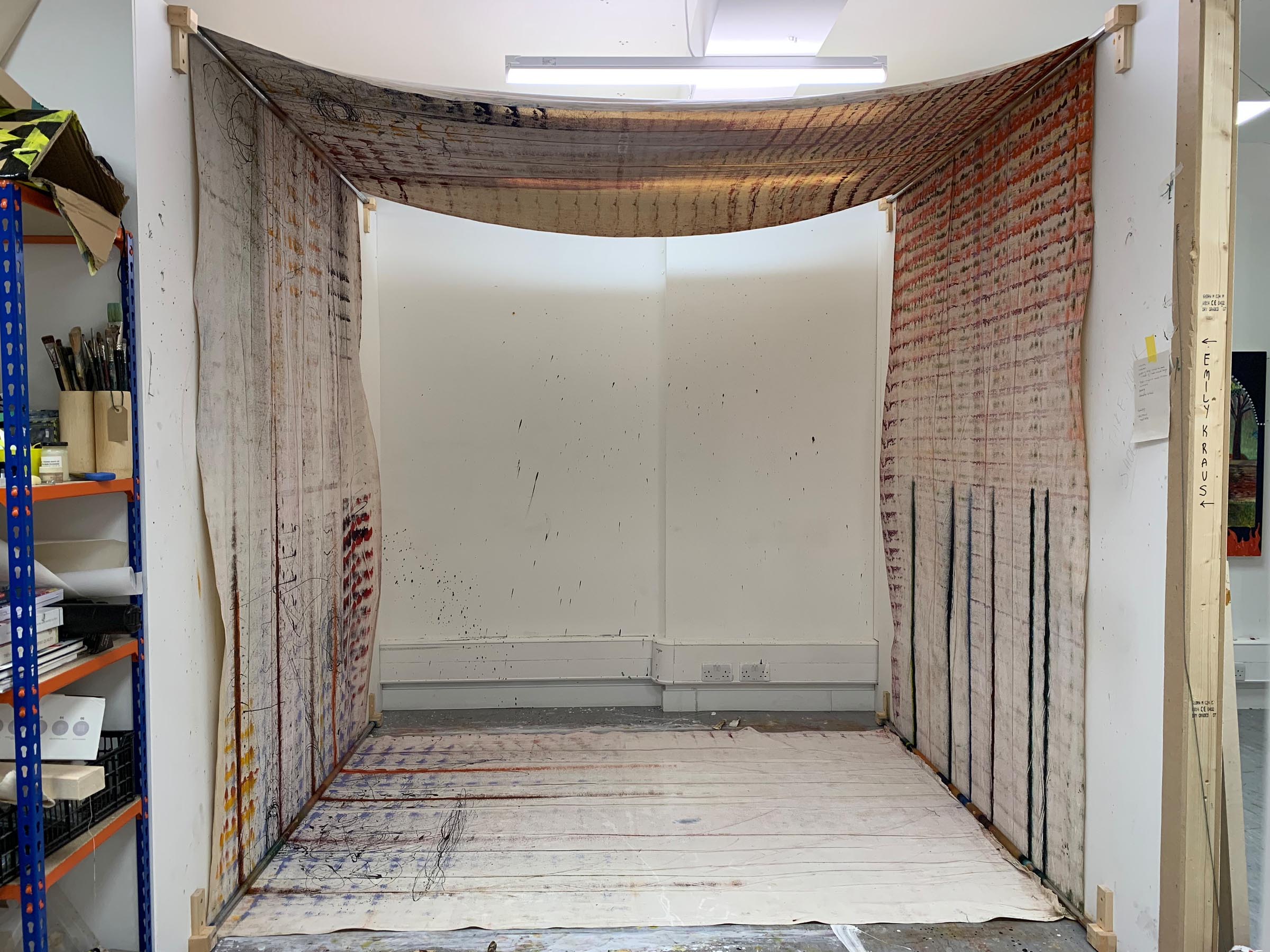
Who are your favorite artists?
I look at artists across media, not limited to visual, so my list includes composers, poets and playwrights as well. Currently, I’m looking at Sarah Sze, Tauba Auerbach, Harminder Judge, John Cage, Iannis Xenakis, Nils Frahm, Johann Sebastian Bach, Rainer Maria Rilke.
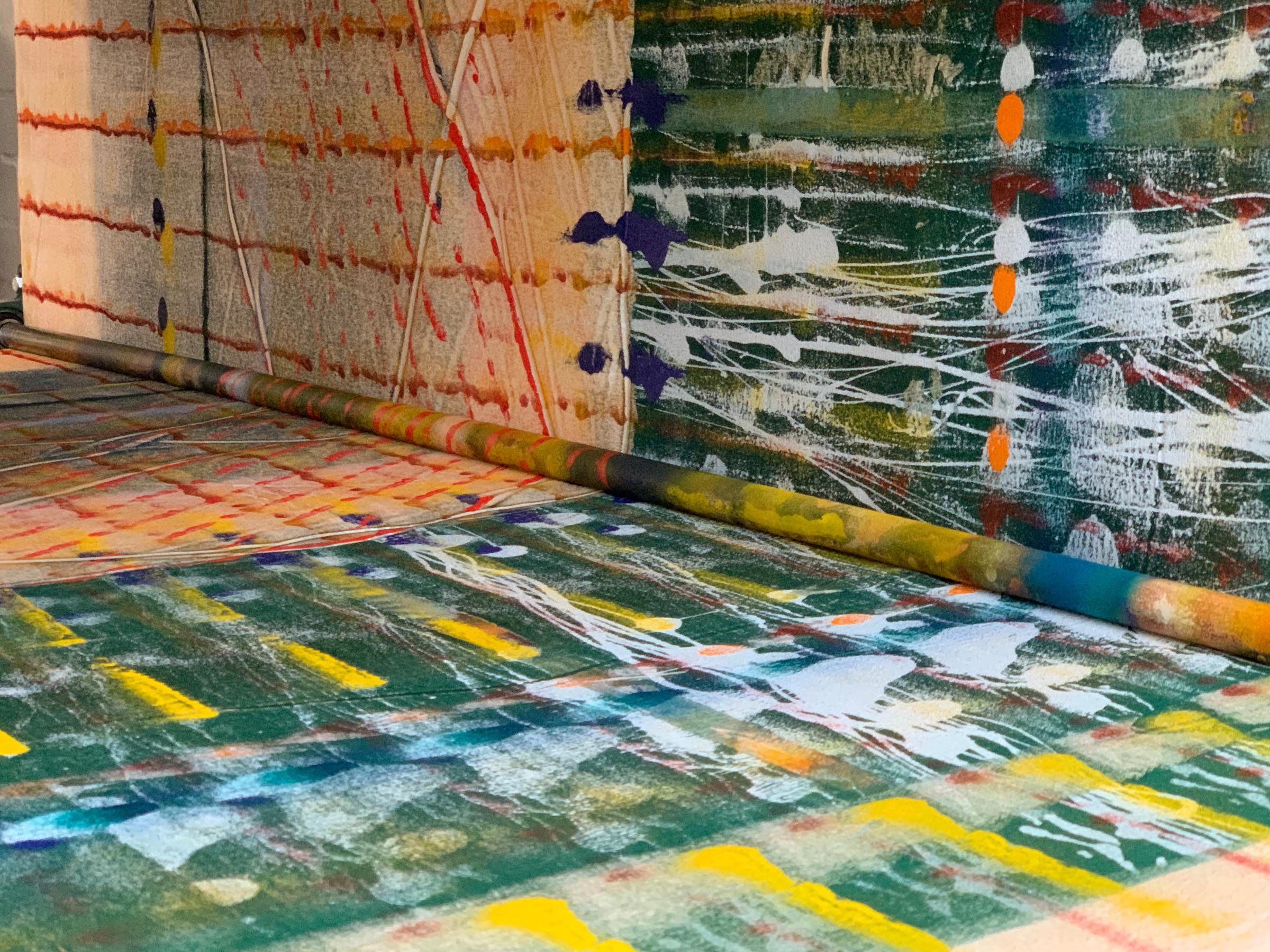
Where do you go to discover new artists?
I discover new artists by researching artists I’m already familiar with, going to exhibitions, and having crits with artist friends.
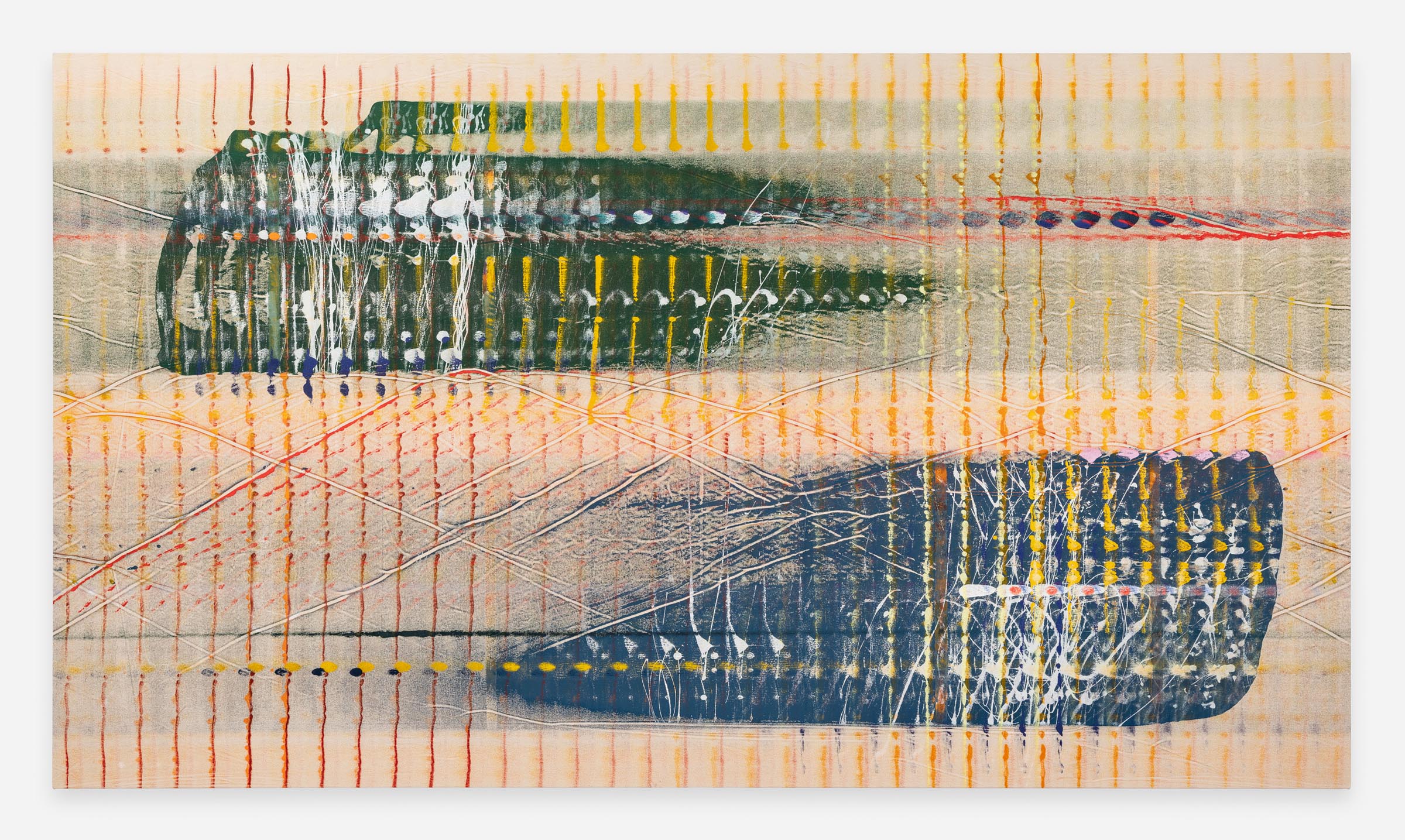
Learn more about the artist by visiting the following links:
copyright © 2024 hopperprize.org • Privacy Policy • Terms & Conditions